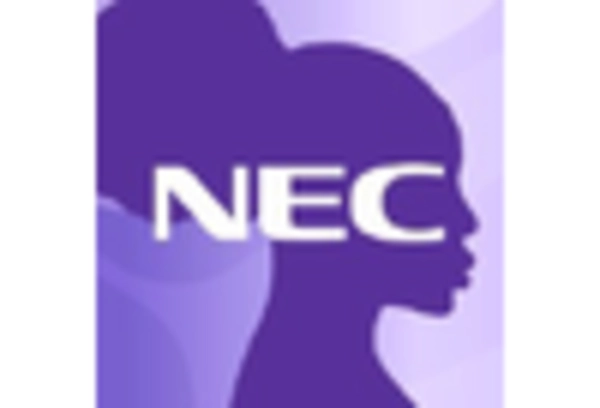Advancements in Wireless Technology
Technological advancements play a crucial role in shaping the voice over-wireless-lan market. Innovations such as Wi-Fi 6 and the upcoming Wi-Fi 7 are set to enhance the performance and capacity of wireless networks. These advancements enable higher data rates and improved reliability, which are essential for voice communication. The voice over-wireless-lan market is likely to see increased adoption of these technologies, as organizations aim to leverage enhanced capabilities for better user experiences. Furthermore, the integration of artificial intelligence in network management could optimize performance, potentially leading to a 30% reduction in latency for voice applications.
Growing Emphasis on Cost Efficiency
Cost efficiency remains a driving force in the voice over-wireless-lan market. Organizations are increasingly seeking solutions that reduce operational costs while maintaining high-quality communication. The shift from traditional telephony systems to wireless solutions can lead to substantial savings, with estimates suggesting that businesses can save up to 40% on communication expenses. This trend is particularly relevant for small and medium-sized enterprises (SMEs) that are looking to optimize their budgets. The voice over-wireless-lan market is thus likely to witness a rise in demand as companies recognize the financial benefits of adopting wireless voice solutions.
Rising Demand for Seamless Connectivity
The voice over-wireless-lan market experiences a notable surge in demand for seamless connectivity solutions. As organizations increasingly rely on mobile devices and remote communication, the need for reliable voice services over wireless networks becomes paramount. This trend is particularly evident in sectors such as healthcare and education, where uninterrupted communication is critical. According to recent data, approximately 70% of businesses in the US are investing in wireless technologies to enhance operational efficiency. The voice over-wireless-lan market is thus positioned to benefit from this growing emphasis on connectivity, as companies seek to integrate voice services into their existing wireless infrastructure.
Increased Focus on Employee Collaboration
The voice over-wireless-lan market is significantly influenced by the growing focus on employee collaboration. As organizations strive to enhance teamwork and communication among remote and on-site employees, the demand for effective voice solutions rises. Collaborative tools that integrate voice capabilities are becoming essential for maintaining productivity. Recent surveys indicate that 65% of employees prefer using voice communication for collaborative tasks. This trend suggests that the voice over-wireless-lan market will continue to expand as businesses invest in technologies that facilitate seamless collaboration, ultimately improving overall organizational performance.
Regulatory Support for Wireless Communication
Regulatory support for wireless communication technologies is emerging as a key driver in the voice over-wireless-lan market. Government initiatives aimed at promoting wireless infrastructure development are likely to bolster market growth. Policies that encourage the deployment of advanced wireless networks can facilitate the adoption of voice over wireless solutions. For instance, the Federal Communications Commission (FCC) has been actively working to allocate spectrum for wireless services, which could enhance the capabilities of the voice over-wireless-lan market. This regulatory environment may lead to increased investments in wireless technologies, further driving market expansion.
















Leave a Comment